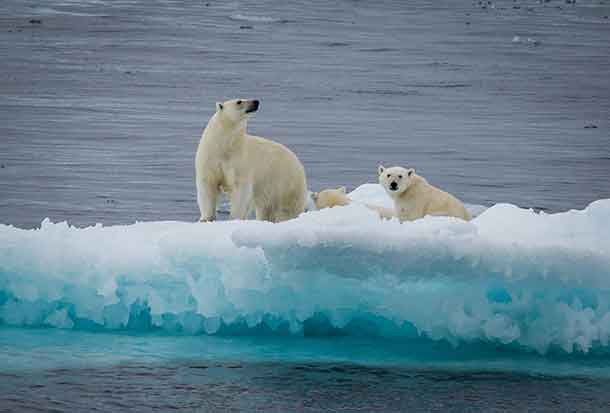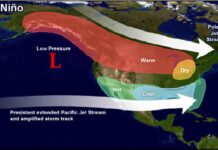

“When even the ‘colder’ years are rewriting the warmest year record books, we know we have a problem”
* Last year was hottest without an El Niño in Pacific
* Rising heat confirms long-term warming trend – WMO
By Alister Doyle Environment Correspondent
OSLO (Reuters) – Last year was the second or third warmest on record behind 2016, and the hottest without an extra dose of heat caused by an El Niño event in the Pacific Ocean, the United Nations said on Thursday.
Average surface temperatures in 2017 were 1.1 degree Celsius (2.0 Fahrenheit) above pre-industrial times, creeping towards 1.5C (2.7F), the most ambitious limit for global warming set by almost 200 nations under the 2015 Paris climate agreement.
The agreement has been weakened by a plan by U.S. President Donald Trump, who doubts mainstream scientific findings that warming is driven by man-made greenhouse gases, to pull out.
The U.N’s World Meteorological Organization (WMO) said 2017 was indistinguishable from 2015 as the second or third warmest year behind 2016, and made 2017 “the warmest year without an El Niño” in records dating back to the late 19th century.
Temperatures in both 2016 and 2015 were lifted by an El Niño, a natural event which can disrupt weather patterns worldwide every few years and releases heat from the tropical Pacific Ocean into the atmosphere.
The WMO said 17 of the warmest 18 years since records began in the 19th century have now happened since 2000, confirming a warming trend driven by man-made greenhouse gases.
“We’re in a long-term warming trend despite the ups and downs you get on an annual basis, even a decadal basis,” said Gavin Schmidt, of NASA’s Goddard Institute for Space Studies, whose data is used by the WMO.
said Professor Dave Reay, chair in carbon management at the University of Edinburgh.
Among extreme weather events last year, the Caribbean and the United States suffered a battering from hurricanes, the Arctic ended 2017 with the least sea ice for mid-winter and tropical coral reefs suffered from high water temperatures.
“Arctic warmth has been especially pronounced and this will have profound and long-lasting repercussions on sea levels, and on weather patterns in other parts of the world,” WMO Secretary-General Petteri Talaas said in a statement.
The findings, which match a projection by the WMO in November, now have full-year data from NASA, the U.S. National Oceanic and Atmospheric Administration (NOAA) and Britain’s Met Office with the University of East Anglia.
“From 1900 to 1980 a new temperature record was set on average ever 13.5 years; however, since 1981 it has increased to every three years,” NOAA said.
The 2015 Paris agreement, which seeks to shift the world economy from fossil fuels this century, aims to limit temperatures to “well below” a rise of 2C above pre-industrial times while pursuing efforts to limit it to 1.5C.
Omar Baddour, WMO scientific coordinator, said temperatures could reach 2C above pre-industrial times by 2060-70. “It’s alarming, actually,” he told a news briefing in Geneva of the ever more frequent records.
In the United States alone, weather and climate-related disasters cost a record $306 billion in 2017, especially western wildfires and hurricanes Harvey, Maria and Irma, NOAA said last week.
Trump wants to promote U.S. fossil fuel industries, at odds with the Paris accord’s goals of phasing out emissions from coal, oil, and natural gas between 2050 and 2100.
By contrast, the U.N. Secretary-General’s Special Representative for Disaster Risk Reduction, Robert Glasser, described the pace of climate change as “an existential threat to the planet” that required a “drastic response”.
And Bob Ward, of the London School of Economics, said the heat “should focus the minds of world leaders, including President Trump, on the scale and urgency of the risks that people, rich and poor, face around the world from climate change.”
(Reporting By Alister Doyle, with extra reporting by Stephanie Nebehay, Marina Depteris and Tom Miles in Geneva; Editing by Catherine Evans)





